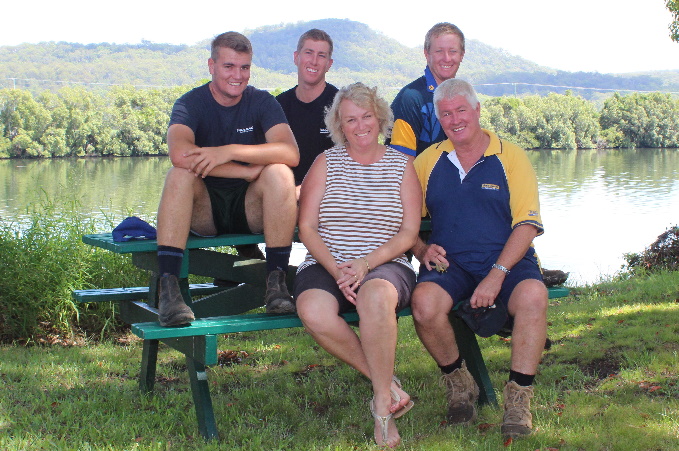NSW is home to some 500 sugarcane farming families, many of whom are multi-generational farmers. When you look at the combination of the agribusiness, location and lifestyle of sugarcane farming in NSW, it’s not hard to appreciate why it is such an appealing occupation.
Tim and Joanne McMahon from Chatsworth Island in the Clarence Valley grow approximately 780 acres sugarcane and cattle with their three sons.
The McMahon family have been growing sugarcane in NSW for four generations and are set to continue the legacy with each of their sons keen to pursue cane farming as a career.
Sons Ben, Hayden and Jacob are all qualified tradesmen and combine their trades with pursuing involvement in cane growing.
Tim has encouraged his sons to have off-farm experience and income, just as his father advised him. Having worked in banking and farm machinery sales in his early years, Tim was always involved in the running of the family farm before taking over the reins full time in 2000.
Joanne also plays an active role on the farm as well as working at a local Day Care centre. As she says, “Having an off farm job has helped us financially, especially whilst we were raising 3 active boys, but it has also given me my own career challenge.”
Whilst cane farming has been the major agricultural pursuit in the Harwood Mill area for almost 150 years, the recent increase in residential development has seen rising pressure on ash drift during the burning of cane crops.
As Joanne comments; “We have lived with cane ash for generations and it’s really only a minor inconvenience when compared to the employment and financial benefits the industry generates here.”
Not only is the northern rivers a beautiful place to live, it offers a productive environment and inclusive cane grower community, with the Sunshine Sugar business being 50% owned by the growers.
As Ben comments, “Neighbouring farmers come together throughout the season to help each other. Whether its cane fires or planting, it’s in our interests to help each other out.”
With improvements in technology and machinery, farmers now have the capacity to effectively work greater areas of land. GPS guidance systems for example are used from planting through to harvesting and ratooning, with the major benefits being ground speed, traffic control on inter-rows and safeguarding of plants.
Changes to chemical use practices has also seen dramatic improvements in both environmental protection and crop yields, with chemical training and certification compulsory for farmers in NSW.
The combination of productive ground, a strong grower community, best practice farming and milling operations, and a strong global market for sugar – all add up to a healthy future for sugarcane farming in Northern NSW.
The McMahon’s are well placed to forge the future with their optimism, expertise and passion for the area and the industry.

